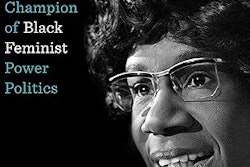Those people of color who received some or all of their higher education at predominantly white institutions frequently describe their experiences in these hallowed environments as bittersweet, with more emphasis on the bitter than the sweet. They recall the various incidents of racism that they encountered at their alma mater, the rarity of seeing and interacting with professors who shared their racial and ethnic background, and the paucity of courses that nourished their cultural identity within a sea of classes that supported the structural racism of the status quo.
 Dr. William B. Harvey
Dr. William B. Harvey
It’s common knowledge that change in the academy happens very slowly. In fact, former college president Brian Rosenburg maintains that “if maintenance of the status quo is the goal, higher education has managed to create the ideal system.” This observation holds true in even greater fashion when there is a racial dimension to any proposed modifications.
One striking example was highlighted in the case of a highly regarded private liberal arts college in the Midwest when it recently issued a public announcement about the creation of a department of African Diaspora studies on campus. The college revealed the connection of this curricular modification to demands made by African American students for classes in this field when it acknowledged that the Concerned Black Students organization submitted this proposed change to improve student life on campus to the president – in 1971. To its credit, the college has made more timely progress in other areas during the 52-year interval; the announcement about the new department was made by the vice president for academic affairs, who is an African American woman.
To facilitate and sustain positive changes in the academy, influence and pressure from both internal and external sources are necessary. As potential financial contributors to their alma maters, alumni are in an especially interesting position to advocate for an institutional environment that affirms and supports people of color. Given the conservative political forces across the nation that are currently pushing to reduce and eliminate support for diversity, equity, and inclusion, meaningful actions by alumni are vital to provide campus leadership with support for the humanistic core values that they previously espoused.
By organizing and coordinating a campaign of collective activism, alumni of color can help their alma maters identify and support a variety of measures that could enhance positive pluralism on their campuses. Popular on-campus reunion events for alumni of color reflect the latent dynamism and possibilities in this group.
A multi-step approach would begin by identifying a symbolic starting date — the first day of African American history month or Hispanic Heritage month, for example — as the point at which the president or chancellor would receive a flurry of handwritten notes from alumni of color, and inserted in the note would be a check in the amount of one dollar. It’s quite plausible that hundreds of such messages could be directed to the institutional leadership.
Each note would express the sender’s desire to see the institution develop and commit to actions that enhance the enrollment, matriculation, and graduation of students of color and increase the employment and promotion of faculty of color. The text could be personalized with brief observations about the writer’s experiences as a student and would call attention to the enclosed check. The closing sentence would express the writer’s intention to review the website on a regular basis for information about how the institution will address the concerns, thus ending phase one.
Phase two would begin six months later, with a second note sent to the president or chancellor that would include personal comments of either congratulations or concern, depending on what actions had been taken at the institution. Another check would be included with this note – this time for five dollars – to convey the possibility of continued financial support, potentially in larger amounts, if-and-when demonstrable progress could be seen.
The third phase of this campaign would be initiated exactly one year from its beginning with another cascade of notes sent from the concerned graduates to the institutional leader. The responsibility for the quality of the campus environment, and the policies and practices that create and undergird its atmosphere, ultimately lie with the chief executive, even when people at lower levels on the organization chart may have day-to-day operational authority. At the conclusion of the operation, the motivated alumni of color will have expressed their concerns; monitored the institutional communications structure for information; encouraged constructive action at the midway point; and finally, demonstrated their satisfaction, or lack of, through the personalized message — potentially with increased financial support. Perhaps they make no contribution at all, if they judge that insufficient progress has been made. Alumni of color can have influence over the behavior of their alma maters and the ethos of the campus environments. They can translate that influence into power by either contributing or withholding their financial support – starting with a one-dollar bill.
Dr. William B. Harvey serves as Distinguished Scholar at the American Association for Access, Equity and Diversity in Washington, DC.



















